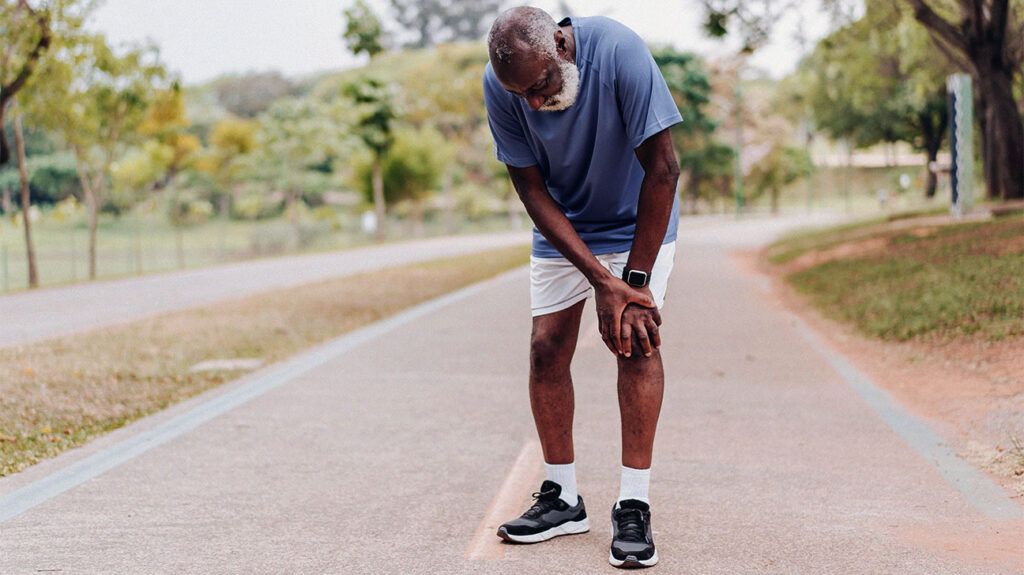Septic arthritis of the knee involves a sudden, severe infection in one or both knee joints. Without treatment, it can impair mobility, lead to permanent damage, or even be fatal.
Septic arthritis is a severe joint infection that can occur suddenly when bacteria, fungi, or viruses infect a joint and cause inflammation. Doctors may also call it “infectious arthritis.”
When septic arthritis affects the knee, it can lead to significant discomfort and may impair mobility without treatment. Early recognition and treatment are crucial to prevent long-term complications.
In this article, we explore the symptoms of septic arthritis of the knee, including when to seek medical attention and how to treat them.

Septic arthritis usually only occurs in one joint and
The most common symptom is joint pain, occurring in
Symptoms can progress quickly — sometimes within a few days — and include:
- severe pain
- swelling around the knee
- signs of infection, such as warmth and tenderness around the joint
- a change in the color of the skin around a joint
- feeling unwell
- difficulty moving the knee or bearing weight on the affected leg
- a high temperature or fever and chills
If an individual experiences symptoms of septic arthritis in the knee, it is crucial they seek medical attention straight away.
Without treatment, a septic arthritis infection can cause rapid destruction of the joint, potentially leading to permanent damage to the joint and surrounding tissues.
The severity of symptoms can vary from person to person, but they can significantly impact daily activities and quality of life. Early diagnosis and treatment are essential to prevent complications and improve outcomes for people with septic arthritis of the knee.
People with underlying health conditions, such as diabetes, or those with a weakened immune system are at greater risk of septic joints. It is essential they contact a doctor immediately to determine if infection is present.
Treatment for septic arthritis in the knee depends on which pathogen is causing the condition. To find out the underlying cause, a doctor may analyze fluid in the knee using a procedure called
Options for treating septic arthritis in the knee may include:
- Antibiotics: Because septic arthritis can become severe rapidly, doctors administer antibiotics to target the infection intravenously (IV), which means directly in a vein. People
may need to stay in the hospital for monitoring and IV antibiotic therapy. - Joint fluid drainage: Sometimes, a doctor may need to drain harmful pathogens and inflammatory fluid from the knee joint. This procedure, known as joint aspiration,
involves using a needle to remove the fluid, helping reduce pressure and relieve pain. - Antifungal medications: If a fungus is causing the infection, a doctor will prescribe antifungal medication rather than antibiotics.
- Antiviral medications:
Viral causes of arthritis can resolve on their own. However, doctors may use antiviral medications in some instances, especially if they suspect a person has hepatitis B, hepatitis C, or HIV. - Physical therapy: After treating the infection, a doctor may recommend physical therapy to help restore mobility and strength to the knee joint and prevent muscle atrophy.
Without prompt and effective treatment, septic arthritis can have long-term consequences for the knee joint and overall health. It can lead to:
- permanent joint damage
- chronic pain
disability
In some cases, the infection can return, further affecting joint function.
Septic arthritis can also affect other organs and systems in the body if the infection spreads through the bloodstream. As a result, the following complications can occur:
- sepsis (an infection of the blood)
- osteomyelitis (an infection of the bone)
- endocarditis (an infection of the heart)
These can be life threatening.
Learn more about the potential long-term effects of septic arthritis.
Below are answers to common questions about septic arthritis of the knee.
What are the three stages of septic arthritis?
Septic arthritis can occur after a person has surgery to insert an artificial joint. Doctors
Early cases occur when an infection develops within the first 3 months after surgery, while delayed cases occur within 3 to 24 months. Late cases develop any time later than 24 months after surgery.
Can you walk with septic arthritis?
Walking may be difficult or impossible for some individuals with septic arthritis, especially during flare-ups when symptoms are severe. Pain, swelling, and stiffness that occur with the condition can make bearing weight on the affected leg challenging.
However, with proper treatment and management, individuals can often restore their mobility over time.
How do you know if you have an infection in your knee?
Signs of an infection in the knee include pain, swelling, warmth, and redness around the joint. People may also experience difficulty moving the knee or bearing weight on the affected leg.
Fever, chills, and fatigue may accompany these symptoms, indicating a systemic response to the infection. If a person suspects they have an infection, they should seek medical attention promptly for evaluation and treatment.
Diagnosis by a healthcare professional is necessary to confirm if infection is present. They may extract and test the joint fluid in the laboratory.
Septic arthritis of the knee can cause severe pain, swelling, and difficulty moving the joint. Prompt recognition and treatment are essential to preserve joint function and prevent long-term complications, which can be fatal.
If an individual experiences symptoms of septic arthritis, such as intense knee pain and fever, it is vital they see a doctor right away.
Treatment typically involves antibiotics and drainage of the infected joint fluid. With proper care, individuals can recover from septic arthritis and regain mobility in the affected knee.
